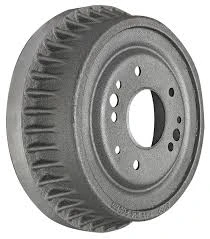Understanding GM Drum Brakes and Their Maintenance Tips for Optimal Performance
Understanding GM Drum Brakes A Comprehensive Overview
Drum brakes have been a staple in automotive braking systems for many decades, particularly in older vehicles and light-duty trucks. Among the various configurations of drum brakes, GM (General Motors) drum brakes are notable for their engineering, performance, and reliability. In this article, we will explore the workings of GM drum brakes, their advantages and disadvantages, the maintenance required, and their relevance in today's automotive landscape.
The Mechanics of GM Drum Brakes
At the core of GM drum brakes is a simple yet effective design. The braking system consists of a cylindrical drum that rotates with the wheel and holds brake shoes inside. When the brake pedal is pressed, hydraulic pressure is applied to the wheel cylinder, which forces the brake shoes outward against the inner surface of the drum. This contact creates friction, which slows down or stops the vehicle.
GM drum brakes typically incorporate a self-adjusting mechanism to maintain the effective distance between the shoes and the drum. This feature is crucial as brake shoes wear down over time, and without proper adjustment, performance could decline. Additionally, many GM drum brake systems use a combination of primary and secondary brake shoes, with the primary shoe being slightly shorter, allowing for improved braking efficiency.
Advantages of GM Drum Brakes
One of the most significant advantages of GM drum brakes is their cost-effectiveness. The manufacturing process for drum brakes is often less expensive than that of disc brakes, making them a popular choice for budget-conscious consumers and manufacturers alike. They are also capable of providing strong stopping power, proving especially effective in low-speed applications.
The enclosed design of drum brakes offers better protection against environmental factors like dirt, moisture, and debris, which can lead to corrosion and wear. This characteristic is particularly valuable for vehicles that operate in challenging terrains or climates.
Moreover, GM drum brakes tend to have a smooth and gradual application of braking force, which can contribute to a more comfortable driving experience.
Disadvantages of GM Drum Brakes
Despite their benefits, GM drum brakes do have some drawbacks. One of the primary concerns is heat dissipation. Drum brakes can retain heat during prolonged use, leading to brake fade, where the braking power decreases due to overheating. This issue is especially prevalent in heavy braking situations such as downhill driving or in stop-and-go traffic.
gm drum brakes

Another disadvantage is the more complicated maintenance process. Replacing or servicing drum brakes can be more cumbersome than disc brakes, as it requires removing the drum and adjusting the shoes properly. This complexity can also result in higher labor costs during servicing.
Maintenance Tips for GM Drum Brakes
To ensure optimal performance, regular maintenance of GM drum brakes is essential. Here are some key tips
1. Inspect Regularly Check the brake shoes and drums frequently for signs of wear, warping, or scoring. Inspection should ideally coincide with tire rotations or at least every 6,000 miles.
2. Lubricate Moving Parts Apply automotive grease to the moving parts of the drum brake assembly to prevent squeaking and to ensure smooth operation.
3. Check Brake Fluid Levels Regularly monitor and top off brake fluid, as low fluid levels can affect the system's hydraulic pressure and performance.
4. Adjust Brake Shoes If the drum brakes are not self-adjusting or if they exhibit signs of decreased performance, manual adjustments may be necessary to maintain the correct clearance.
5. Replace When Necessary Be proactive in replacing brake shoes and drums when they reach the wear limit. Ignoring these signs can lead to decreased performance and safety issues.
Conclusion
GM drum brakes remain a viable choice for many vehicles, particularly those designed for utility and economy. While they may have some limitations in terms of heat dissipation and maintenance, their advantages in cost, performance, and durability make them a relevant option even in today’s automotive marketplace. Understanding how they work and how to maintain them effectively can ensure that drivers continue to enjoy reliable stopping power for years to come. As the industry progresses, drum brakes may evolve, but their fundamental workings and principles will likely remain influential in automotive design.
-
Truck Drum Brake Spring Replacement ProcedureNewsAug.22,2025
-
Evolution Of Brake Drum Function Designs In Automotive HistoryNewsAug.22,2025
-
Drum Brake Motor Thermal Management SolutionsNewsAug.22,2025
-
Essential tools for brakes and drums repair jobsNewsAug.22,2025
-
Trailer Drum Brake Self-Adjusting Mechanisms ExplainedNewsAug.22,2025
-
Brake Drum Types in Vintage Auto RestorationNewsAug.22,2025
-
Rear Drum Brakes Maintenance TipsNewsAug.04,2025


